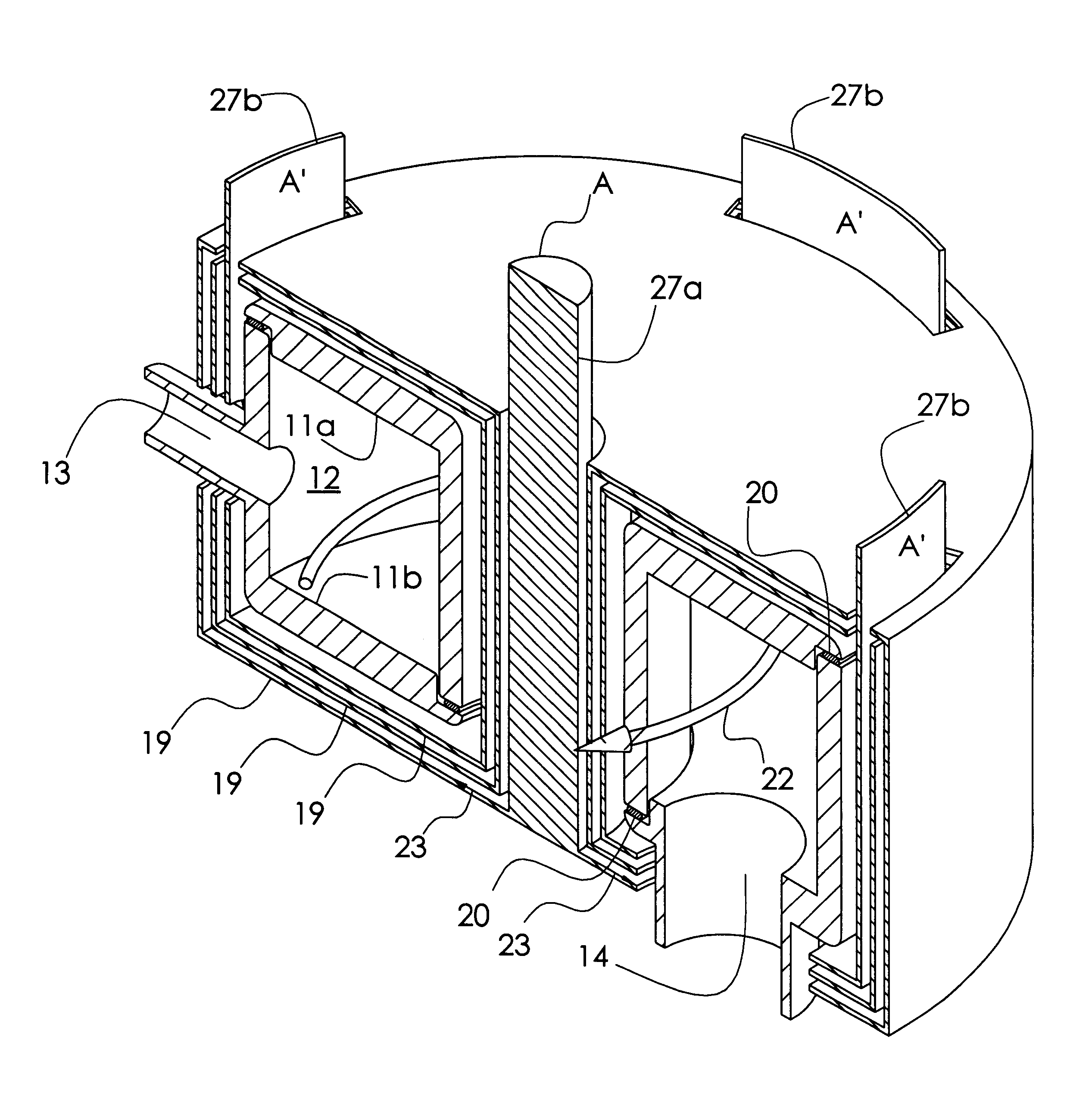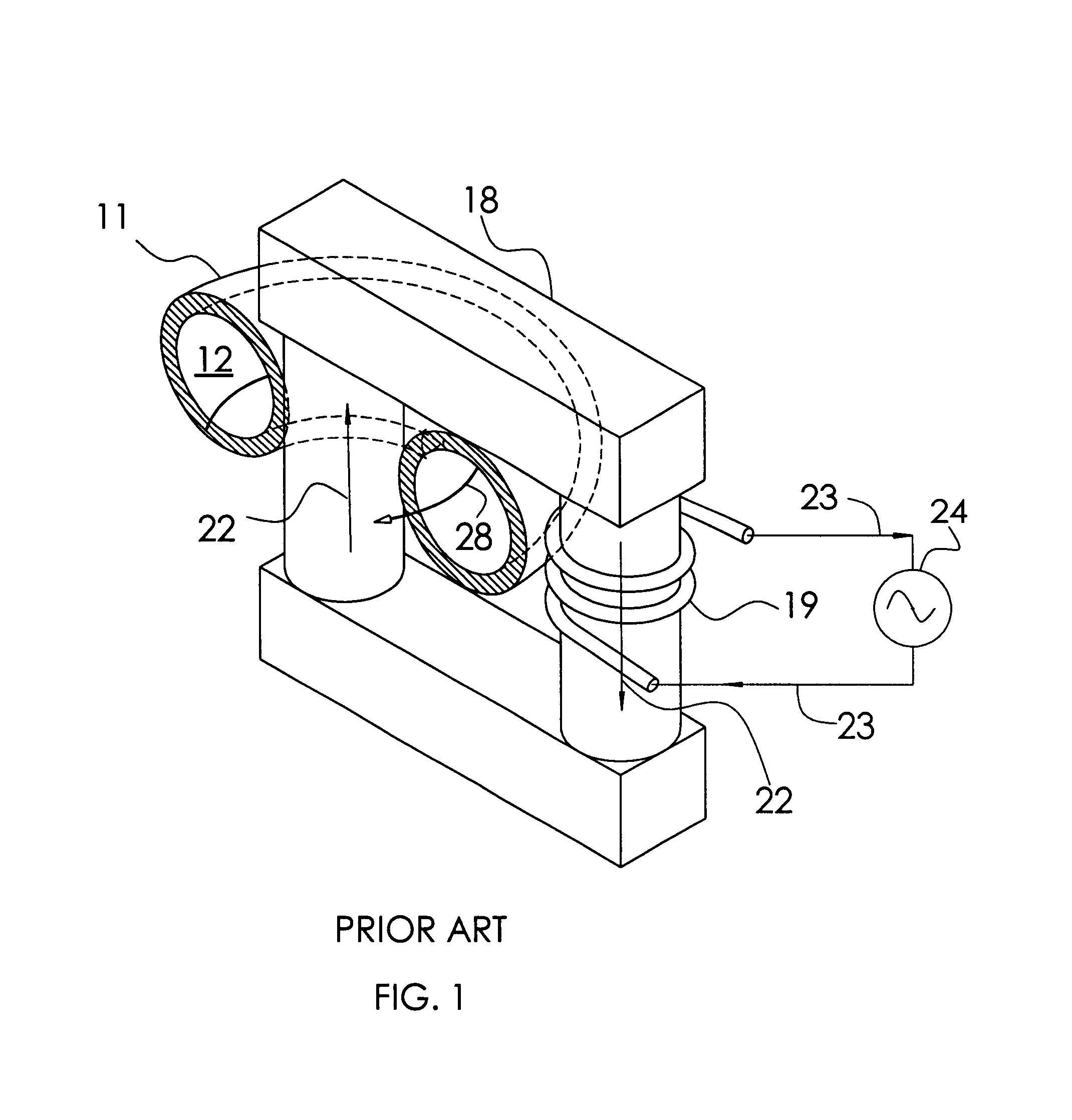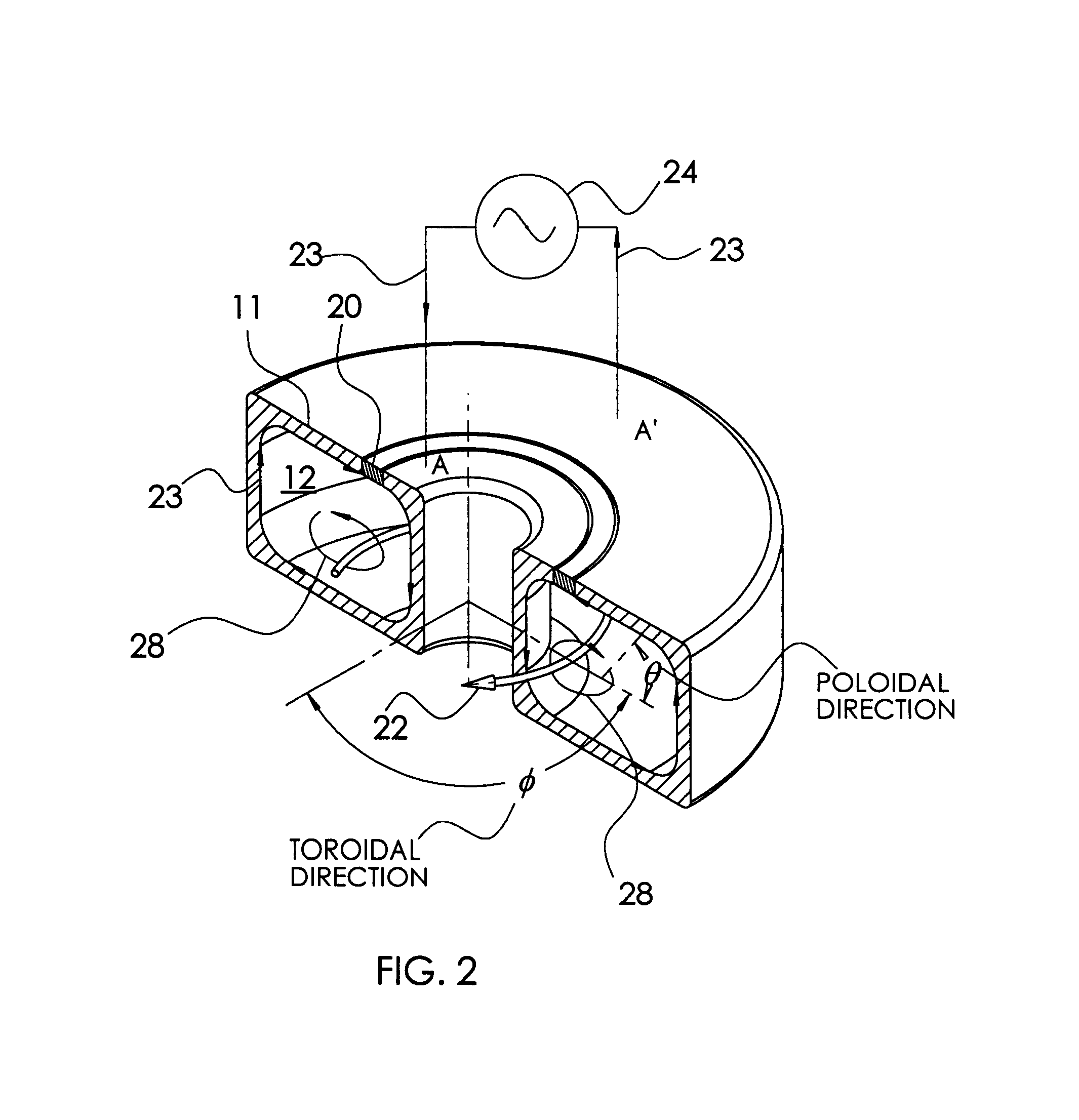Induction plasma reactor
a plasma reactor and inductive technology, applied in nuclear reactors, electric/magnetic/electromagnetic heating, manufacturing tools, etc., can solve the problems of plasma contamination, high undesirable, and metal contamination source, and achieve high plasma density, high productivity applications, and efficient breakdown of feed gasses
- Summary
- Abstract
- Description
- Claims
- Application Information
AI Technical Summary
Benefits of technology
Problems solved by technology
Method used
Image
Examples
Embodiment Construction
FIG. 1 is a partially sectioned isometric view which illustrates conceptually the prior art of H. U. Eckert (IEEE Transactions on Plasma Science, Vol. PS-2, 1974) as well as patents U.S. Pat. No. 4,431,898, Japan 02-260399, U.S. Pat. No. 5,290,382 and U.S. Pat. No. 6,150,628. The toroidal plasma chamber wall 11 is shown sectioned along a centerline to expose the inside. The toroidal plasma chamber 12 refers to the void that is bounded and defined by the chamber wall 11. The plasma chamber 12 is filled with a working gas at some controllable pressure as well as with the plasma itself. The gas and plasma are not separately illustrated or numbered since they coincide with the plasma chamber 12. An optional gas inlet and outlet, which are not shown in this figure, allow the working gas to flow through the chamber.
Plasma transformer magnetic core 18 forms a closed magnetic path that penetrates through the center hole of the toroidal plasma chamber 12 and encircles a portion of the plasma...
PUM
| Property | Measurement | Unit |
|---|---|---|
| Dielectric polarization enthalpy | aaaaa | aaaaa |
| Power | aaaaa | aaaaa |
| Density | aaaaa | aaaaa |
Abstract
Description
Claims
Application Information
 Login to View More
Login to View More - R&D
- Intellectual Property
- Life Sciences
- Materials
- Tech Scout
- Unparalleled Data Quality
- Higher Quality Content
- 60% Fewer Hallucinations
Browse by: Latest US Patents, China's latest patents, Technical Efficacy Thesaurus, Application Domain, Technology Topic, Popular Technical Reports.
© 2025 PatSnap. All rights reserved.Legal|Privacy policy|Modern Slavery Act Transparency Statement|Sitemap|About US| Contact US: help@patsnap.com



